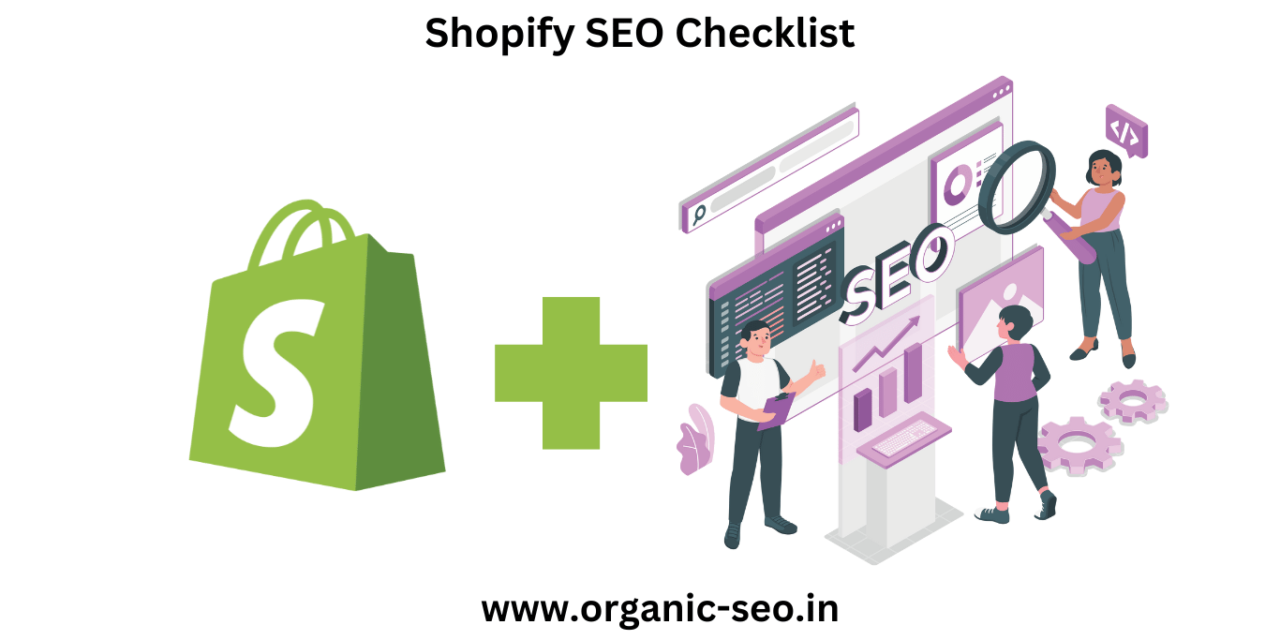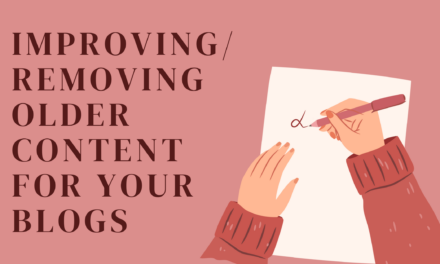Starting a Shopify SEO project can feel a bit overwhelming, especially when you’re not sure where to begin. With various aspects of SEO to consider, like technical stuff, content, and off-page strategies, it’s easy to get bogged down.
That’s why we’ve put together our own Shopify SEO checklist to help simplify things. This checklist will guide you through the basics that we check when optimizing Shopify stores to boost their SEO. To get the most out of it, just go through each item and make sure you’ve covered it at least once. Some items, like on-page SEO, might need a few rounds of review. Our hope is that this checklist gives you a clearer picture of the essential things we look at when working on Shopify websites.
Shopify SEO Checklist :
Basic Setup:-
1. Install Google Analytics
First things first, set up Google Analytics for your Shopify store. It’s a go-to tool for most SEO experts because it helps you track important things like organic traffic and revenue. Plus, it gives you a ton of data on where your traffic comes from, what devices people use, and more. To connect Google Analytics to your Shopify store, just go to Online Store > Preferences > Google Analytics and add your Google Analytics account ID.
2. Set Up Google Search Console
Google Search Console is another essential tool for SEO. It provides loads of valuable data, like what people are searching for to find your site, issues with crawling and indexing, Core Web Vitals, and more. To get started, create an account on the Search Console website. If you already have Google Analytics set up, you can use it to verify your site.
3. Submit Your Sitemap.xml To Search Console
While you’re in Google Search Console, take a minute to submit your sitemap.xml. This helps Google access your site’s sitemap.xml file directly, making it easier to find important content. To submit your sitemap.xml, go to Index > Sitemaps > Add a new sitemap. Then, add your sitemap.xml URL path, which should typically be “sitemap.xml” for Shopify sites.
4. Perform Keyword Research
Before diving into your SEO project, you’ll want to figure out the core keywords for your site. This step is essential because it helps you know which terms to focus on. You’ll want to pick keywords that have the best chance of bringing in revenue for your store. There are different ways to do keyword research, from brainstorming to checking out what keywords your competitors are using or using Google Ads data. The goal is to gather lots of data and then narrow it down to 100-300 high-priority keywords.
5. Track Your Keywords
While Google Analytics and Search Console give you traffic data, they don’t tell you much about how your keywords are doing in search rankings. So, now that you know the keywords you want to rank for, it’s time to start tracking them. Tracking keywords helps you see how individual keywords are ranking over time and how your site as a whole is doing. There are various rank tracking tools out there, like Ahrefs, Moz, SEMRush, and others.
Shopify On-Page SEO Checklist :-

1. Optimize Your Category & Product Page Title Tags
Let’s keep it simple and start with your title tags. These have a big impact on your store’s SEO. Focus on reviewing and optimizing your title tags, especially on collection and product pages. These pages are super important for your site’s revenue, so get those title tags in good shape. Make sure they have the right target keywords to let Google know what the page is all about.
2. Ensure URLs Have A Clean Structure
Shopify has some limits on how URLs work, but you can still make sure your new URLs are well-optimized. Short, readable URLs with your core keywords are the way to go. You want users to understand what a page is about just by looking at its URL. For example, if you’re selling men’s dress pants:
– OK: /collections/the-best-mens-dress-pants-23/
– Good: /collections/best-mens-dress-pants/
– Great: /collections/mens-dress-pants/
The shorter, cleaner URLs with primary keywords are the best. Thankfully, Shopify usually helps you create good URLs.
3. Identify Internal Linking Opportunities
Here’s an easy way to improve your Shopify store’s SEO: add internal links. These help Google find deeper content on your site more easily. Plus, they improve the overall user experience. Start with your Shopify blog. Find blogs that talk about key collections or products, and add links to those relevant pages. You can also add “Related Products” sections on product pages and link to sub-collections from collection pages. Simple, right?
4. Improve Your Website Navigation
Your site’s navigation is a big deal because it’s how both users and Google find their way around your site. Take a look at your navigation and ask a few questions- Can users easily find what they’re looking for? Are your key collections and products easy to reach through the navigation? Is your navigation mobile-friendly? Just some simple checks to make sure your site is easy to navigate.
Shopify Technical SEO Checklist :-
1. Perform A Crawl Of Your Site
Now, let’s get a bit technical. You should do a site crawl to see how Google and other search engines navigate your site. Tools like Screaming Frog are great for this. During the crawl, you want to look for things like title tags that need fixing, lots of 4xx and 3xx error codes, issues with canonical tags, and URLs that can’t be indexed. Fixing these things can make Google’s job easier when it’s crawling and indexing your site.
2. Check Your Robots.txt File
Your Shopify store comes with a default robots.txt file. This file tells Google what it can and can’t crawl. For most stores, the default rules are fine. But if your site has some extra custom stuff, you might need to adjust it. Pay attention if you have faceted navigation or different internal search URLs. It’s all about making sure Google knows where it should and shouldn’t go.
3. Crawl Your Sitemap.xml File
It’s also a good idea to crawl your sitemap.xml file. This file tells Google and other search engines what the important pages on your site are. Shopify generates a sitemap.xml index file with child sitemaps for different types of pages. When you crawl it, look for pages that return 404 or 3xx error codes or low-quality pages. Usually, Shopify’s sitemap.xml is good, but sometimes it might include low-quality pages that aren’t linked on your site.
4. Ensure Category Pages Link To Canonical Products
Here’s a little tech issue that Shopify can have out of the box: duplicate content. Sometimes collection pages link to duplicate product pages by default. If you see URLs with both /collections/ and /products/, you’ve got a duplicate page. These duplicates usually have canonical tags that point to the actual ranking page, but it’s still a good idea to fix this. So, make sure your product links on collection pages don’t lead to duplicates.
5. Review Your Structured Data Implementation
Structured data is basically code that gives Google more info about your page’s content. It makes Google’s job easier and helps with SEO. Check how structured data looks on your various page types in Shopify. The Schema Markup Validator can help you see if everything’s in order. Ideally, different page types should have specific markup. Ensure that key properties are filled out correctly.
6. Implement Lazy Loading
Speeding up your Shopify site? Consider lazy loading images on collection pages. Lazy loading means images load only when users scroll to them. It saves resources and speeds up your site. The lazysizes library is a great option for implementing lazy loading with Shopify.
7. Check For Indexation Issues From JavaScript
Sometimes, content on your Shopify site relies on JavaScript to render. You’ll want to check if Google can fully index this content, especially if it depends on client-side JavaScript. For instance, some parts of a page might disappear when JavaScript is off, which can affect indexation. You can use the Chrome Developer extension to see what content relies on JavaScript and do “site:” searches for individual pages to check how Google indexes them.
8. Review The Index Coverage Report
Dive into the Index Coverage report in Search Console to see how Google crawls and indexes your site. It’s a handy tool that can highlight crawling and indexing issues you might not be aware of. Check if there are URLs that should be indexed but aren’t, if Google is crawling low-quality URLs, or if your robots.txt is blocking important content. It’s all about making sure Google is doing its job properly.
And there you have it! This Shopify SEO checklist can make the whole SEO process less intimidating. Just tackle one step at a time, and don’t forget to revisit the checklist regularly to keep your site’s SEO in top shape. If you ever need any help or have questions about our Shopify SEO services, feel free to reach out. We’re here to make your SEO journey a breeze!





